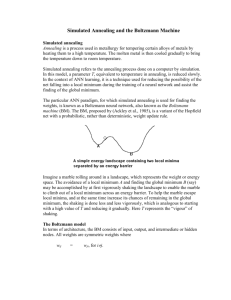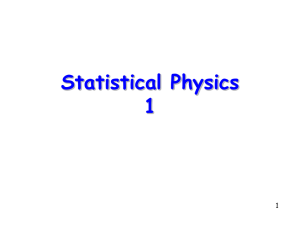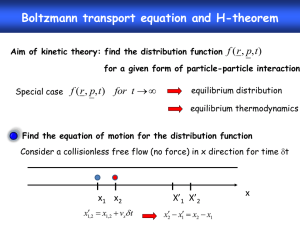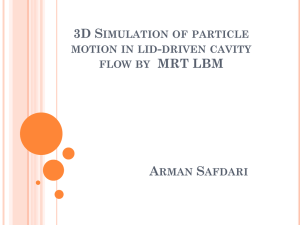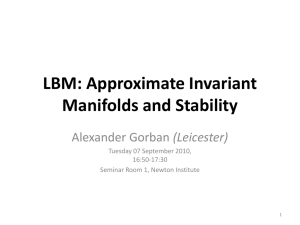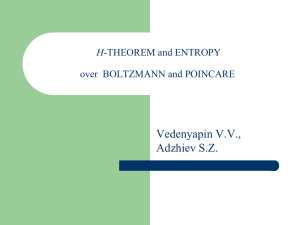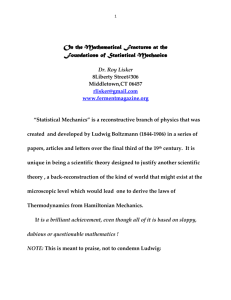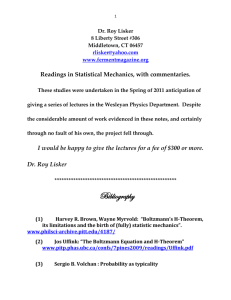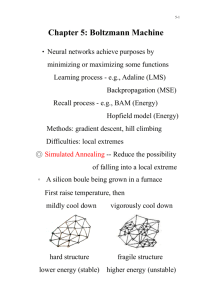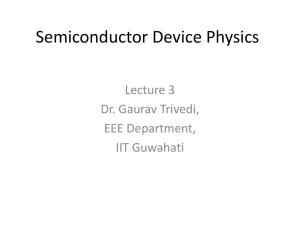Boltzmann - Neural Network and Machine Learning Laboratory
advertisement
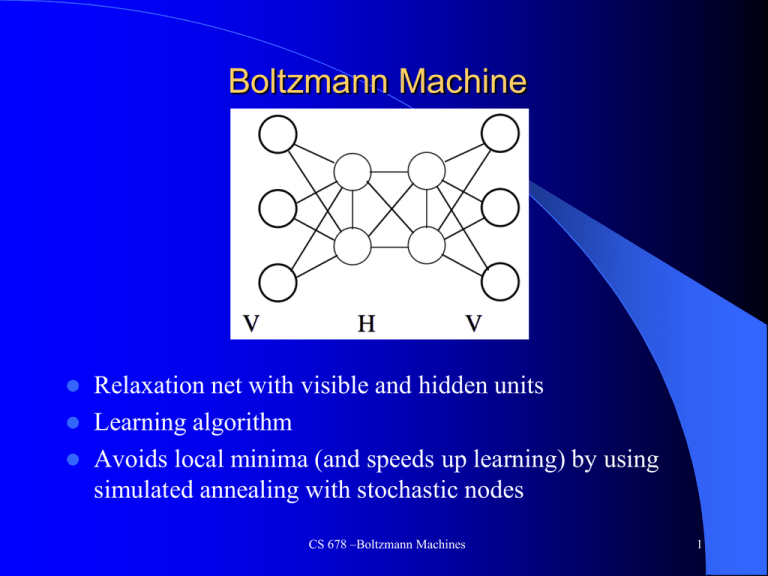
Boltzmann Machine Relaxation net with visible and hidden units Learning algorithm Avoids local minima (and speeds up learning) by using simulated annealing with stochastic nodes CS 678 –Boltzmann Machines 1 Node activation: Logistic Function Node k outputs sk = 1 with probability else 0, where T is the temperature parameter Node does asynchronous random update CS 678 –Boltzmann Machines 2 Network Energy and Simulated Annealing Energy is like in the Hopfield Network Simulated Annealing during relaxation – Start with high temperature T (more randomness and large jumps) – Progressively lower T while relaxing until equilibrium reached – Escapes local minima and speeds up learning Energy = -å wij si s j - åq i si i¹ j CS 678 –Boltzmann Machines i 3 Boltzmann Learning Physical systems at thermal equilibrium obey the Boltzmann distribution Pa -(Ea -E b )/T =e Pb P+(Vα) = Probability that the visible nodes (V) are in state α during training P-(Vα) = Probability that the V is in state α when free Goal: P-(Vα) ≈ P+(Vα) What are the probabilities for all states assuming the following training set (goal stable states)? 1001 1110 1001 0000 CS 678 –Boltzmann Machines 4 Boltzmann Learning Information Gain (G) is a measure of the similarity between P-(Vα) and P+(Vα) + P (Va ) + G = å P (Va )ln P (Va ) G = 0 if the probabilities are the same, else positive Thus we can derive a gradient descent algorithm for weight change by taking the partial derivative and setting it negative where pij = probability that nodei and nodej simultaneously output 1 when in equilibrium CS 678 –Boltzmann Machines 5 Network Relaxation/Annealing A network time step is a period in which each node has updated approximately once 1. Initialize node activations (Input) – Hidden nodes activations initialized randomly – Visible nodes Random Subset of nodes set to initial state, others random Subset of nodes clamped, others set to random or initial state 2. 3. 4. Relax following an annealing schedule. For example: 2@30, 3@20, 3@10, 4@5 *Gather stats for m (e.g. 10) time steps, pij = #times_both_on/m Set final node state (output) to 1 if it was a 1 during the majority of the m time steps (could also output the probability or net value) CS 678 –Boltzmann Machines 6 Boltzmann Learning Algorithm Until Convergence (Δw < ε) For each pattern in the training set Clamp pattern on all visible units Anneal several times calculating p+ij over m time steps end Average p+ij for all patterns Unclamp all visible units Anneal several times calculating p-ij over m time steps Update weights: Δwij = C(p+ij - p-ij) End CS 678 –Boltzmann Machines 7 4-2-4 Simple Encoder Example Map single input node to a single output node Requires ≥ log(n) hidden nodes 1. Anneal and gather p+ij for each pattern twice (10 time steps for gather). Noise .15 of 1 to 0, .05 of 0 to 1. Annealing Schedule: 2@20,2@15,2@12,4@10 2. Anneal and gather p-ij in free state an equal number of times 3. Δwij = 2 (p+ij – p-ij ) Average: 110 cycles CS 678 –Boltzmann Machines 8 4-2-4 Encoder weights before and after training Note common recursive weight representation What is the network topology? CS 678 –Boltzmann Machines 9 Shifting network, ~9000 cycles Note no explicit I/O directionality CS 678 –Boltzmann Machines 10 Boltzmann Learning But does this Boltzmann algorithm learn the XOR function Hidden nodes But first order weight updates (ala perceptron learning rule) CS 678 –Boltzmann Machines 11 Boltzmann Summary Stochastic Relaxation – minima escape and learning speed Hidden nodes and a learning algorithm, improvement over Hopfield Slow learning algorithm but need to extend to learn higher order interactions A different way of thinking about learning – creating a probabilistic environment to match goals Deep learning will use the Boltzmann machine (particularly the restricted Boltzmann machine) as a key component CS 678 –Boltzmann Machines 12
